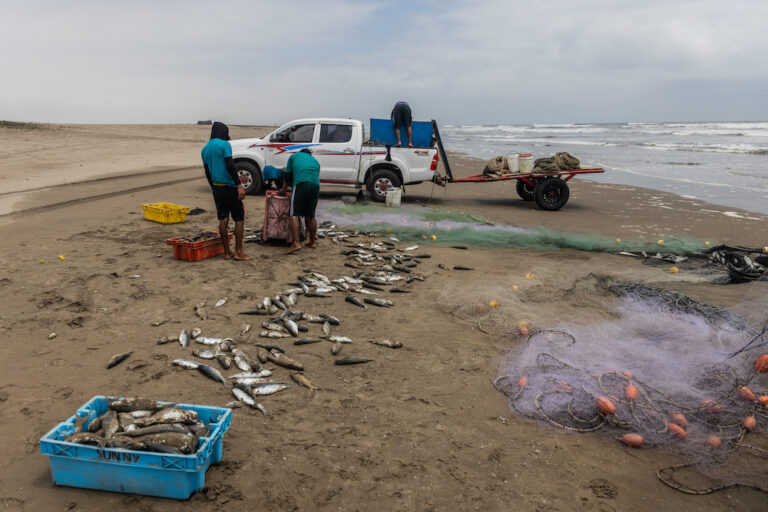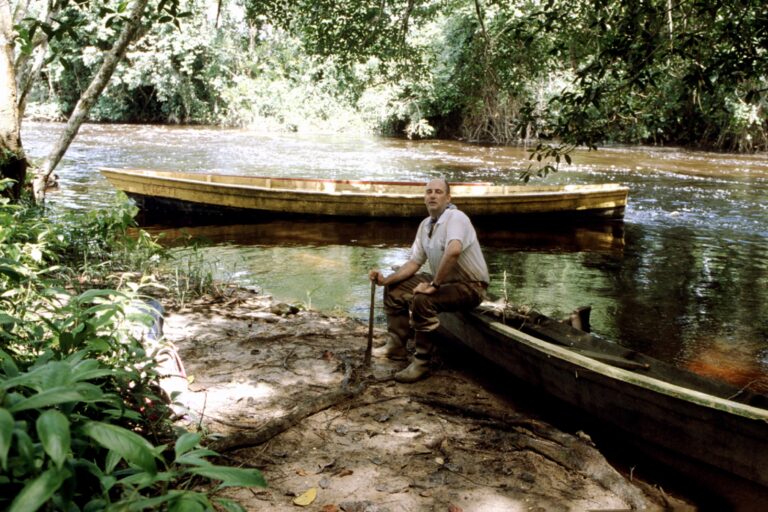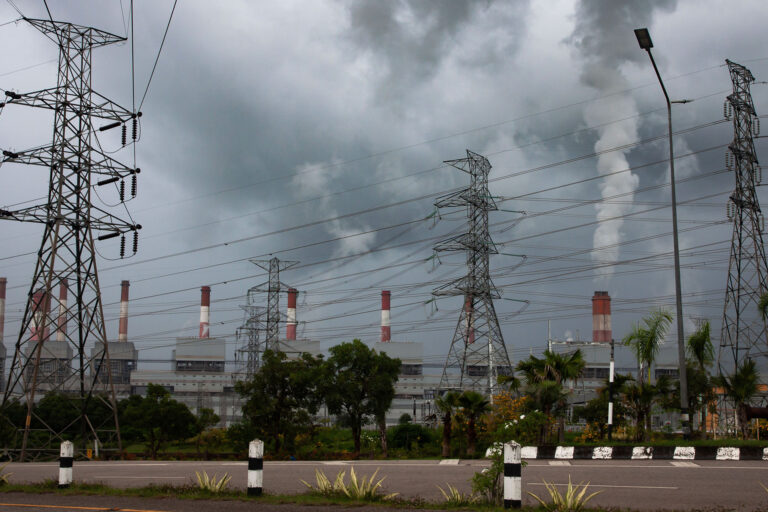- Thailand’s Thap Lan National Park is on the frontline of the deadly battle against the illegal rosewood trade, but the root cause of the problem lies outside the park’s borders.
- Siamese rosewood has been listed under CITES Appendix II since 2013, but loopholes in trade rules and poor oversight allowed the trade to persist.
- A key loophole was closed at last year’s CITES CoP17. Now, campaigners fear for the future of lookalike species like Burmese rosewood and padauk.
The illegal trade in Siamese rosewood (Dalbergia Cochinchinensis) is so well-oiled that when loggers don’t have enough men in Thailand’s forests to carry all their spoils over the Cambodian border, they simply leave felled wood lying in the forest to collect on return trips. The poachers are safe in the knowledge that no time spent illegally cutting down the tree in the wild is wasted.
Thap Lan National Park in Thailand, along with other protected areas in the Dong Phayayen – Khao Yai Forest Complex, a UNESCO World Heritage site, is currently at the heart of the illegal logging crisis. “The big groups of loggers come to Thap Lan, so we might be the last big rosewood site,” Thap Lan National Park Director Prawatsart Jantorntep told Mongabay. But while rangers in Thap Lan do what they can to crack down on illegal logging, a greater problem lies beyond the park’s borders, in the nebulous system of corruption or circumvention enabling the black-market trade across Southeast Asia. Exploitation of loopholes in regulations governing the timber trade and lax — or illegitimate — enforcement of CITES procedures has driven Siamese rosewood to near extinction in the wild. Unless the situation improves, the survival of lookalike species is also threatened.

Demand for Siamese rosewood is part of the global hongmu (“red wood” in Chinese) trade that undermines forest governance and fuels illegal logging across the world. Over the last decade and a half demand for rosewood in China has boomed, with imports increasing by 1,250 percent between 2000 and 2015, according to Washington, D.C.-based non-profit Forest Trends.
A deadly loophole
Siamese rosewood was listed on the Convention on International Trade in Endangered Species (CITES) Appendix II in 2013, to prevent the illegal and unsustainable trade threatening its survival. But an Annotation in its listing — Annotation 5 — permitted the sale of “logs, sawn wood and veneer sheets” under CITES controls, while allowing for the trade in any other “semi-finished” products without the need for certification. This enabled processing factories (particularly in Vietnam) to refine raw logs illegally cut from protected forests, and then trade rosewood products on legally.
Following a proposal from Thailand, Annotation 5 was removed from Siamese rosewood’s listing at the CITES’ Conference of the Parties in 2016, helping to close the loophole. It was replaced by Annotation 4, which subjects the trade in all parts and derivatives (except seeds and seedlings) to CITES controls. Conservationists have welcomed increased protections for the endangered hardwood species, but it comes as the last trees are already being logged out of Thailand’s forests. The replacement of Annotation 5 with Annotation 4, “while potentially too late for Siamese rosewood, is an important precedent for other species that are listed on CITES,” Jago Wadley, senior forest campaigner at the international NGO Environmental Investigation Agency (EIA) told Mongabay.
Dubious permits
Under Siamese rosewood’s CITES listing all import and export of the endangered species has to be authorized through a licensing system. Each Party to the Convention (the relevant ones here being Thailand, Cambodia, Laos, Vietnam and China) has a management authority responsible for administering the licensing system. Management authorities in the country of export (or re-export) must issue export permits (or re-export certificates) for listed species. These permits may only be issued if “the specimen was legally obtained and if the export will not be detrimental to the survival of the species.” But experts say deliberate forgery or invalid administration of export permits has allowed for a widespread subversion of trade mechanisms created to protect Siamese rosewood.

A 2016 report released by EIA alleged the CITES listing for Siamese rosewood has “largely failed because the actions of Cambodia and Laos have … fundamentally undermined efforts to curb trade.” EIA’s report from last June claimed it was “highly unlikely” much of the volume of Siamese rosewood exported from Cambodia and Laos during 2013 and 2014 had been legally harvested in its country of origin, and that the sheer number of CITES export permits poses a “direct threat to the survival prospects for Siamese rosewood.” In other words, trees illegally cut in places like Thailand’s Thap Lan National Park and smuggled into Cambodia or Laos were being resold with export permits that were either forged or illegitimately granted by those countries’ CITES management authorities.
Wadley told Mongabay there is an ongoing illegal and unsustainable trade of Siamese rosewood operating under the cover of CITES permits. This, he said, is enabled by what he describes as “poor or illegitimate administration of CITES procedures and permits by some parties — whether due to capacity constraints or criminal acts.” He added that “Siamese rosewood is a classic case of that failing.”
According to Wadley, the release of EIA’s report “prompted an admission by the Cambodian government that all and any exports that did occur must have occurred under ‘fake permits.'” He added that the Cambodian government told EIA it had notified Vietnam (Cambodia’s sole direct importer) of the matter back in 2014. Vietnam has argued that Cambodia’s CITES management authority had verified its permits as legitimate, a claim refuted by the Cambodian management authority. That has presented a problem.
“The two management authorities appear to be in public and bitter disagreement over the matter,” Wadley said.
CITES’ Secretariat in Geneva is charged with assisting Parties to the Convention with their compliance to enforcement activities such as permits issuance. After the Secretariat’s official mission to Laos in July last year, the body recommended Laos be placed under a trade suspension for Siamese rosewood until it has conducted inventories and established a management plan for the species. The recommendation was formally adopted at last year’s CITES CoP, Wadley told Mongabay.

Replacement species
Siamese rosewood’s “replacement species” in the hongmu trade such as Burmese rosewood (Dalbergia oliveri/bariensis) and padauk (Pterocarpus macrocarpus) now dominate the Hongmu trade in Southeast Asia. Siamese rosewood’s rampant overexploitation and its CITES listing back in 2013, combined with China’s growing middle-class consumer base, has skyrocketed the demand for these similarly-hued, but less expensive timbers. EIA research on the trade in Burmese rosewood and padauk harvested in Myanmar and exported to China from 2013 – 2014 found that volumes of trade were so large that both species could become commercially extinct within twelve years of CoP17, and could occur in as little as two, without increased protections for the species.
The good news is that CITES CoP17 elected to upgrade Burmese rosewood to an Appendix II listing coming into force this month. It remains to be seen if the lessons learned from the decimation of the world’s Siamese rosewood stocks will enable the Mekong countries’ governments to administer effective CITES permitting systems for other threatened species such as Burmese rosewood under CITES regulations.
“Without interventions to improve Mekong region CITES implementation, the problems that occurred with Siamese rosewood are highly likely occur with Burmese rosewood,” Wadley said. “2017 is a crucial year for CITES to ensure timber listings in the Mekong region are credibly implemented, and that permits are not issued or accepted illegitimately.”
In Thap Lan, rangers are bracing for the next wave of demand that will filter down through Southeast Asia to the forest, “I believe that if Siamese rosewood is finished, they will start to look for other woods that are valuable. Because they are confident that, even if they don’t have guns, they just need chainsaws and fuel, and they can sell it,” said Prawatsart.
Continue reading Mongabay’s on-the-ground report on the illegal logging of Siamese rosewood in Thailand’s Thap Lan National Park













